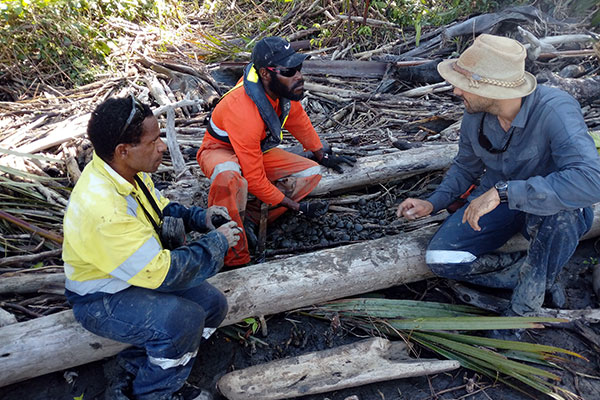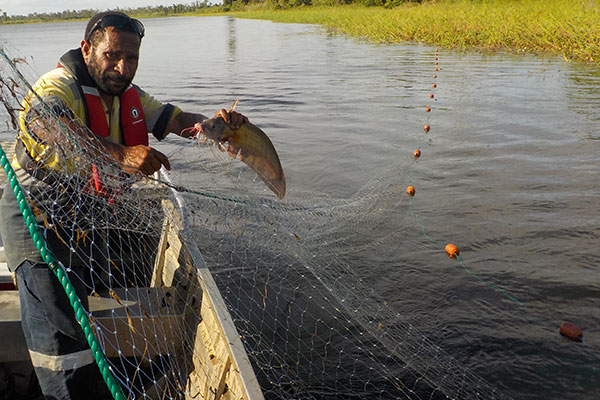Fish Stock Biodiversity
Since 1983, OTML has monitored fish biomass, abundance and species richness, using standardised gillnet methods at three riverine sites, to assess the change in fish catch over time.Fish Biomass Impacts
Between 1983 and 2018, fish biomass decreased significantly due to the high sediment loads and also increased fishing pressure due to the expanding population.
However, the extent of decline in fish abundance and species richness has reduced since 2009, coinciding with the observed long term improvement in water quality and bed level stabilisation due to the mitigation programs (MWTP and dredging).
Non-mining impacts on fish stock
In addition to the effect of riverine waste disposal, an unknown proportion of the decline is due to population increase and the associated fishing pressure from the communities such as access to improved technologies, boats/outboard motors and use of larger mesh fishing nets.
El Nino drought conditions (such as 1997/8 and 2015/16) are considered to be the worst of the non-mining factors and severely stresses fish populations which can take up to 3 years for fish populations to rebound back to predrought levels.

Current Situation
In 2017, 11 representative lagoons, lakes and swamps that formed, were studied to determine if these new aquatic habitats supported similar ecology, fish assemblages and biomass, as in established floodplain habitats.
The results showed that the newly formed grassed lagoons were highly productive and the biomass in these sites, although dominated by exotic/introduced species, exceeded the per capita daily intake requirement on nearly all occasions.
OTML will continue to monitor the riverine biodiversity as part of the annual monitoring program and maintain the environmental mitigation projects to reduce the overall impacts.

